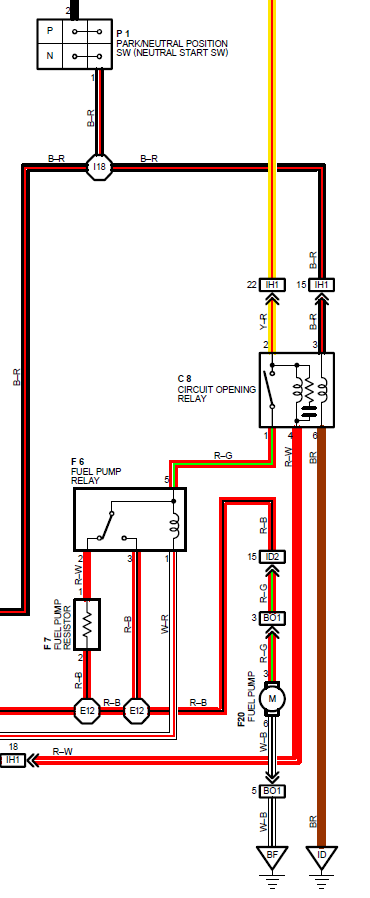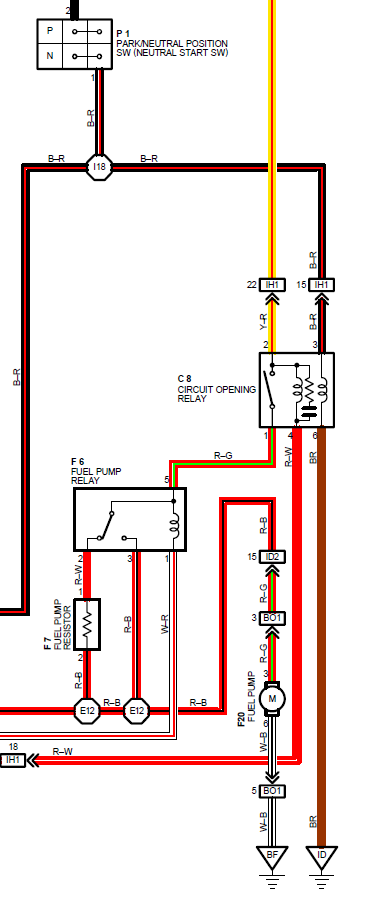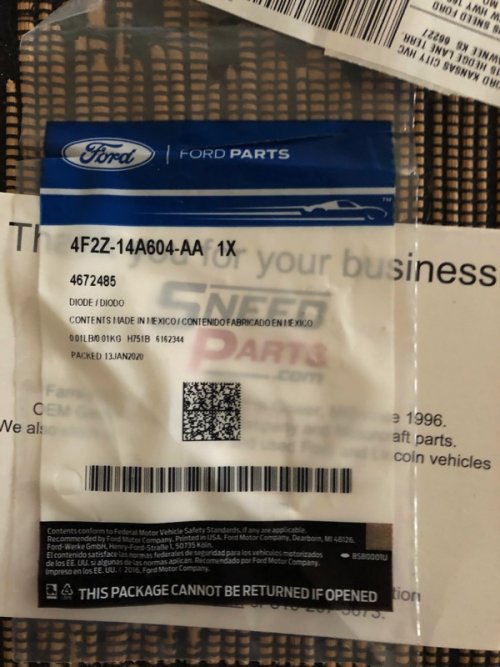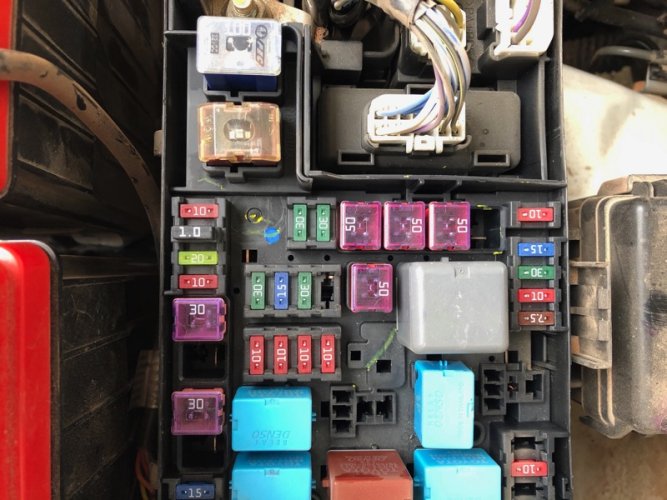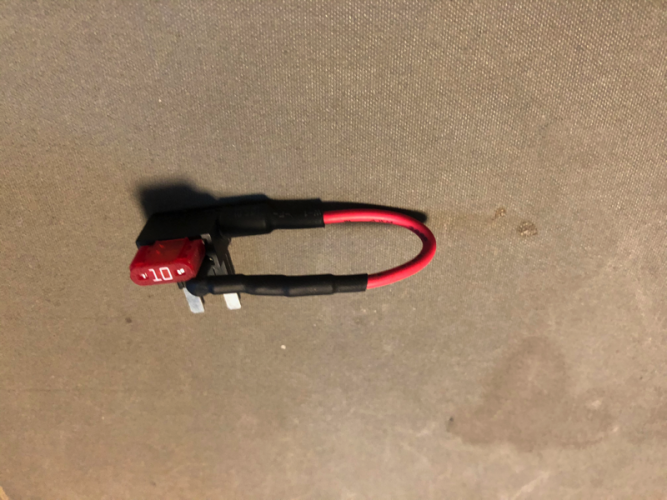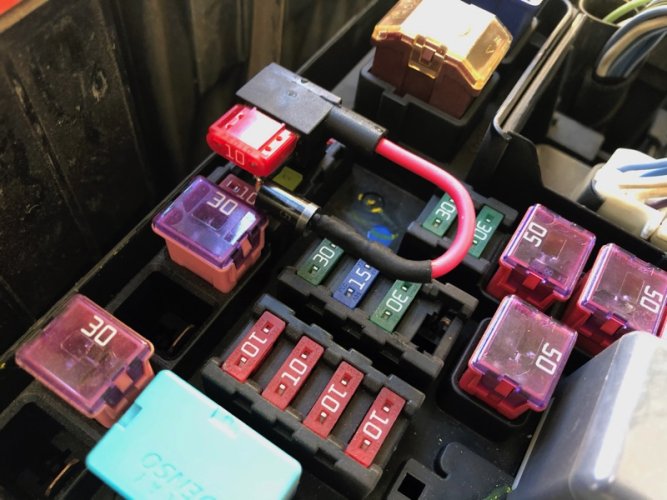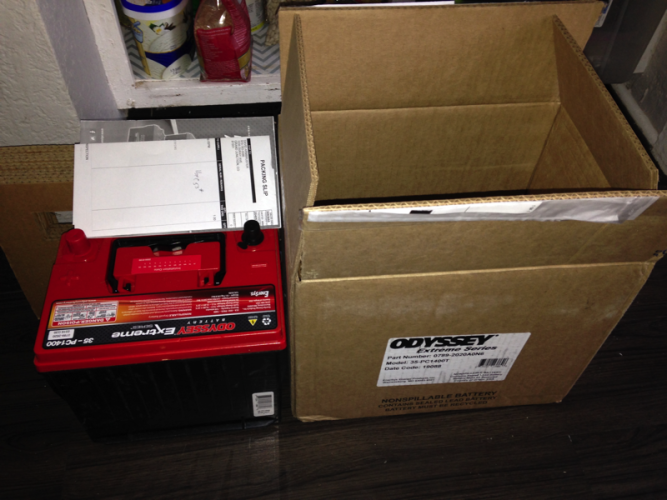This past weekend on the pre-run I experienced hot and cold no-starts. Mostly a jump start worked (going from 12.5 to 13.5 volts b/c other truck was running. Jumper packs useless).
On drive home when it did not hot start at lunch
@jps8460 and I took two additional diagnostic steps (1993 80). We could hear a click at the starter but the starter motor was not turning (i.e. "no crank"):
1) confirmed 12.5 V at connector from ignition circuit (we unplugged this from the starter)
2) ran a wire straight from battery + to starter solenoid ignition connection (the one unplugged in #1 immediately above) while key was in "run" position. It started right up and every time. (FYI
@jps8460 my research (not guaranteed, is that the solenoid coil current is around 14Amps. I can test that with my clamp meter one day)
Turns out, "click, no crank" does not always mean a bad battery OR a bad starter. Read on ....
Considerations:
- I rebuilt this starter last month
- Big Odyssey battery two years old has 12.5-6 resting volts.
- Ignition switch about 2 years old
- starter battery cable a few years old. Good welding wire with crimped and sealed ends.
- Grounds are good.
- Starter solenoid ignition connection terminal housing locking tab is busted. I had it held in place with zip ties. So, while it was not disconnected, I have a new Toyota one (connector housing 90980-11400) to assure positive lock.
- No corrosion but dielectric grease in the connection. Jackson commented he likes to apply that to the sealing gaskets of a connector, not the metal electrical bits because in some circumstances - esp with older less springy connections - grease can physically push apart electrical contacts. After reconnect with less grease it worked once. But later it did not.
- I have a new Toyota starter terminal repair pigtail (repair terminal with wire 82998-12480) on order. $7.01. This is the metal connection that goes into the housing.
(You can find housings with pigtails on E-bay and Amazon for about $15 but the OEM housing plastic is going to last a lot longer. It already lasted 30 years)
BUT most likely my problem is a 2.0kW plunger in a 2.2kW starter.
The slightly different 2.0kW plunger in a 2.2kW starter is known to work when cold and not so much when hot. (
The resistance of a solenoid coil will measurably change based on temperature (room temperature compared to 200°, as an example).
As a result of the temperature rise, the solenoid coil resistance will increase, which will in turn reduce (increased resistance decreases current flow) the current draw resulting in lower available push or pull force. Here, the wrong plunger is mostly ok when cold but is not being pulled/pushed enough when hot)
I pretty much remanufactured a 2.2kW starter awhile back, new armature bearings, cleaning/greasing the drive assembly, sanding/cleaning the armature, replacing contacts and plunger, zinc plating the case, replacing O-rings, new wire insulation,---. But after a few months I started to get the...

forum.ih8mud.com
I have a 2.2kW plunger on order (28235-35080, plunger magnet switch, $37.88)
Some things I learned that may come in handy on road or trail one day with a no-start rig automatic transmission rig. After other typical diagnostics:
1) unplug IGN circuit connector at solenoid and check for voltage when key in start position. Compare that voltage to battery voltage for no voltage or amount of drop.
Toyota starter motors and gears do not cease to work nearly as frequently as contacts and plungers, and there are ways to bypass the contacts:
2) With key in "on" position and engine cleared of body parts so you can start the truck, touch a jumper a wire (small wire is ok) from batt+ to starter solenoid connection. This may start truck.
3) With key in "on" position and engine cleared of body parts so you can start the truck, touch jumper cable (you need big wire here) from batt + to starter motor + (bypassing the solenoid and contacts). Alternatively if you don't have jumper cables you could disconnect the battery wire at the solenoid and touch it to the starter motor, or find some way to make a short jumper there (but a lot less space to work with)
After all of the above, if I ever have a start problem I will wire in a relay to take the solenoid current off the ignition switch circuit. Later years have relays to fire the solenoid. (
http://www.4crawler.com/4x4/CheapTricks/Starter.shtml#OtherOptions)


